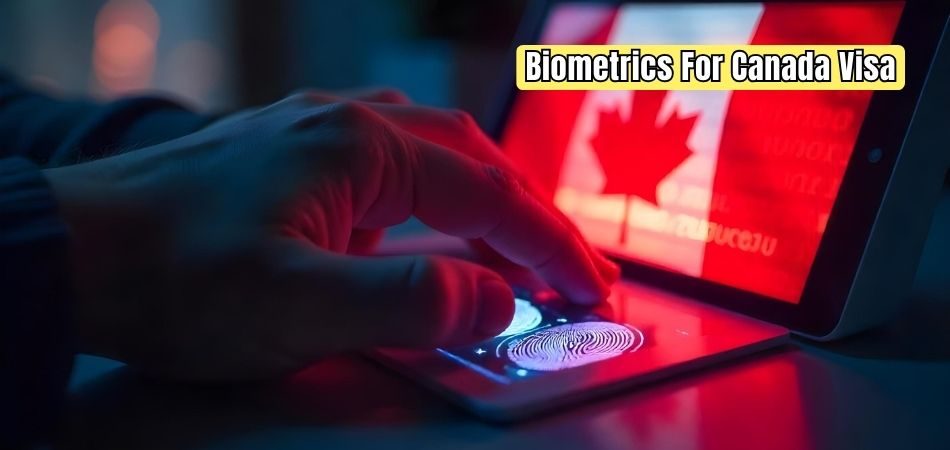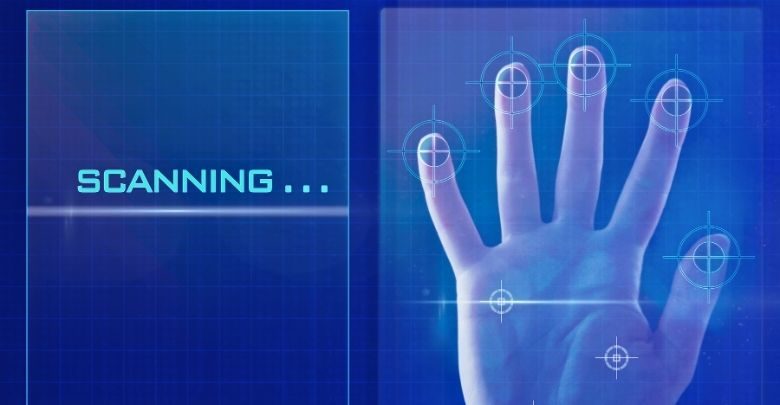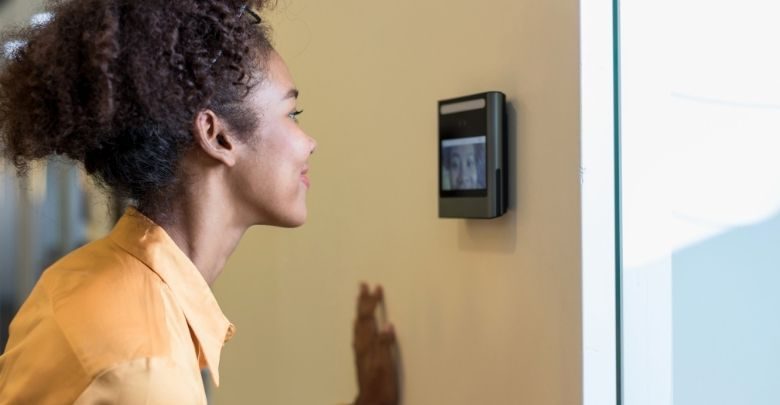Biometrics have become an essential part of the Canada visa application process. From visitor visas to work permits, providing biometrics is now mandatory for most applicants. This step ensures secure, accurate identification and makes the entire process more reliable for both the applicants and Canadian authorities.
So, what are biometrics for Canada visa? They are your fingerprints and a facial photo, collected digitally and stored securely by Canadian immigration authorities. These details confirm your identity and protect against fraud, making sure the person who applied is the same person who arrives in Canada.
Want to know how to complete the biometrics process smoothly? Read on for step-by-step guidance, required documents, tips for success, and answers to common questions. Let’s make your application process simple and hassle-free.
Biometrics for Canada Visa: Step-by-Step Process
Biometrics are now a required step in the Canada visa process. From visitor visas to permanent residency, most applicants must provide fingerprints and a photo. This secure process confirms your identity, prevents fraud, and ensures smooth visa approval. Here’s a clear guide to completing biometrics successfully.

Step 1: Check If You Need Biometrics
Before anything else, confirm whether your visa type requires biometrics. Most applicants, including those applying for visitor visas, study permits, work permits, and permanent residency, will need to provide them. You can verify this on the official IRCC website.
Step 2: Pay the Biometrics Fee
Submit your visa application online or in person and pay the biometrics fee (CAD 85 per person, up to CAD 170 for families). Without payment, IRCC will not issue your Biometric Instruction Letter, known as bil canada, and your application may be delayed. Keep the receipt for proof.
Step 3: Receive the Biometric Instruction Letter (BIL)
The BIL is sent to your IRCC account (and sometimes to your email). This document contains all instructions, including where to go, how to book, and the deadline for completing your biometrics. Read it carefully and keep it handy.
Here is a sample Biometric Instruction Letter (BIL):
Immigration, Refugees and Citizenship Canada (IRCC)
Biometric Instruction LetterDate of Issue: [DD/MM/YYYY]
Application Number: [E123456789]
Unique Client Identifier (UCI): [1234-5678]
Applicant Name: [First Last Name]Dear [Applicant Name],
This letter is to inform you that you are required to provide your biometric information (fingerprints and photograph) in support of your application for a [Visitor Visa / Study Permit / Work Permit / Permanent Residence].
Instructions:
- You must provide your biometrics within 30 days of the date of this letter. Failure to do so may result in delays or refusal of your application.
- Book an appointment at a Visa Application Centre (VAC), Application Support Centre (ASC – for applicants in the U.S.), or Service Canada office (for applicants inside Canada).
- Bring the following documents to your appointment:
- This Biometric Instruction Letter (BIL)
- Your valid, unexpired passport
- Appointment confirmation slip (from VAC/Service Canada)
Please retain a copy of this letter for your records.
Sincerely,
Immigration, Refugees and Citizenship Canada (IRCC)
Step 4: Schedule Your Biometrics Appointment
Using the information in your BIL, book an appointment at a Visa Application Centre (VAC) or other authorized collection site. Appointment slots can fill quickly, so it’s best to book as soon as possible. Choose a date that allows enough time for travel and preparation, especially if you are attending conferences in Canada and need to ensure timely visa processing.
Step 5: Prepare Required Documents
Gather all the necessary documents before your appointment. Here are the documents you’ll need in this process:
- Biometric Instruction Letter (BIL)
- Valid passport
- Appointment confirmation/receipt
- Any additional government-issued ID (optional backup)
- Bring originals, and consider carrying photocopies as a precaution.
Step 6: Attend the Appointment
Arriving early is a simple way to avoid unnecessary stress. Plan to get to the center at least 15 minutes before your scheduled time. When you check in, the staff will guide you through the process. It’s quick and straightforward, usually taking no more than 20 to 30 minutes from start to finish.
Step 7: Provide Your Biometrics
This step involves having your fingerprints scanned and a digital photograph taken. To make sure everything goes smoothly, keep your hands clean and free of ink, henna, or bandages. For the photo, maintain a neutral facial expression. Religious head coverings are allowed as long as your face remains visible for the scan.
Step 8: Collect the Biometric Confirmation Receipt
After you finish, the officer will hand you a confirmation receipt. This small document is very important because it proves you have completed the biometrics requirement. Keep it safe and make a copy if possible. You may need to provide this receipt later in the visa process as official proof.
Why Is Biometrics Required for Canada Visa?
Biometrics are now a critical part of the Canadian visa application process. This requirement plays a major role in maintaining security and ensuring a smooth entry process for travelers. But why exactly does Canada insist on biometrics?
Improved Security and Identity Verification
Through fingerprints and facial recognition, the Canadian government can accurately verify the identity of visa applicants. This reduces the risk of identity theft and fraud, ensuring that only the rightful person receives the visa and enters Canada safely.
Efficient Immigration Screening
Collecting biometrics makes the screening process more efficient. It helps immigration officers quickly verify identities, reducing the risk of errors in decision-making. The system checks the biometric data against global databases, ensuring applicants don’t have criminal records or security risks elsewhere.
Prevention of Document Fraud
Using biometric data makes it far more difficult to falsify records. Unlike forged papers, fingerprints, and facial scans are much harder to fake. This system helps Canada preserve the integrity of immigration and ensures entry is limited to genuine applicants.
Simplified Border Control
Biometrics improve the border control process by allowing faster checks at the point of entry. When travelers arrive, immigration officers can instantly match the provided biometrics with the stored data. This makes the border-crossing experience smoother and reduces wait times for travelers.
Easier Future Visa Applications
One of the biggest advantages is that biometric data stays valid for ten years. Applicants don’t have to resubmit within that period, which saves time and simplifies the process for frequent travelers. This long validity period also reduces administrative workload for visa offices, making the system more efficient for both applicants and authorities.
Supports Law Enforcement Collaboration
Sharing biometric information with trusted international partners allows Canadian authorities to spot potential threats more effectively. This cooperation strengthens overall border security and makes travel safer for everyone.
Who Needs to Give Biometrics?
Biometrics are required for most people applying for a Canadian visa or permit. This includes visitors, students, workers, and permanent residency applicants. While there are some exemptions, the general rule is that you should be ready to provide fingerprints and a photo if you are applying for entry to Canada. Before we go into the specific categories, let’s look at who falls under this requirement and who may be exempt.
Visitor Visa Applicants
If you are applying for a temporary visitor visa, also known as a tourist visa, you will most likely need to provide biometrics. Canada uses this step to confirm that the person entering matches the person who applied. Even short visits for family events or tourism usually require this security check.
Study Permit Applicants
International students planning to study in Canada must give biometrics as part of their study permit application. This ensures that the student entering the country is the same as the one approved by the Canadian government. Since permits often last several years, biometrics help maintain a reliable record for future renewals.
Work Permit Applicants
Those applying for a Canadian work permit also need to provide biometrics. This applies whether you are taking up a short contract or moving for long-term employment. The fingerprints and photograph serve as proof of identity throughout your stay and help Canadian authorities verify your details during your work period.
Permanent Residency Applicants
If you’re applying for permanent residency, biometrics are a required step in your application. Since permanent residency is a long-term status, Canada wants to ensure that all personal information is securely tied to your identity. Biometrics help create a trustworthy record that stays valid for future renewals or citizenship applications.
Who Is Exempt from Biometrics?
Not every applicant needs to provide biometrics. Children under the age of 14 and seniors over the age of 79 are generally exempt. Diplomats and certain visa-exempt travelers may also fall into this category. The IRCC website provides a complete list, so always check your eligibility before assuming you are exempt.
Documents Needed for Canada Visa Biometrics (Explained in Detail)
To successfully complete biometrics for Canada visa, you have to bring the right documents. Preparing these documents in advance ensures a smooth experience at the biometric collection center. Here are the documents needed for biometrics Canada:
Biometric Instruction Letter (BIL)
The BIL is a mandatory document issued by Immigration, Refugees, and Citizenship Canada (IRCC) after your visa application submission. It outlines the steps you need to follow, including details on where and how to complete biometrics. Make sure to print this letter and carry a hard copy to your appointment.
Valid Passport
You must bring the same passport you used during your visa application process. This is crucial, as it serves as the primary identification document and is needed to verify your identity during the biometrics. Make sure your passport is valid, undamaged, and contains a clear photo.
Government-Issued ID
While the passport is the main ID, bringing an additional government-issued identification is advisable. It can be a driver’s license, national ID card, or other valid ID with your photo. This provides an extra layer of identity confirmation during the biometric process.
Visa Application Receipt
If applicable, bring the receipt you received after submitting your visa application. This receipt helps confirm that you have already paid the visa fees and have an active application in process. It’s not always required, but it can be helpful for verification purposes.
Where to Give Biometrics for Canada Visa?
Biometrics are not collected at every office, so it’s important to know exactly where to go once you receive your Biometric Instruction Letter (BIL). The location depends on where you live and the type of application you submitted. Below are the main options available to applicants.
Visa Application Centres (VACs)
For most people applying outside Canada, biometrics are collected at Visa Application Centres (VACs). These centers are located in many countries worldwide and are operated by authorized service providers. You’ll need to book an appointment online, show up with your BIL, passport, and appointment slip, and the staff will guide you through the process.
Application Support Centres (ASCs) in the United States
If you are living in the U.S. and applying for a Canadian visa, biometrics are usually taken at Application Support Centres (ASCs). These are run by the U.S. Citizenship and Immigration Services (USCIS) but authorized by Canada to handle biometric data. The process is the same as at a VAC, and appointments are required.
Service Canada Offices (Inside Canada)
Applicants already inside Canada may be asked to provide biometrics at designated Service Canada locations. Not every office collects biometrics, so you must book through your IRCC account when instructed. Bring the same documents — your BIL, passport, and appointment confirmation — and follow the instructions provided by the staff.
Other Authorized Locations
In some countries, Canada partners with additional centers or embassies where biometrics can be collected. These will be clearly listed in your BIL and on the official IRCC website. It’s important not to visit a random office; only use the location officially assigned to you to avoid delays or rejections.
How Long Does Biometrics for Canada Visa Take?
Note that the biometric process for Canada visas is a simple but crucial step in the entire process. While the actual appointment typically takes about 15-30 minutes, the overall processing time can vary. Being aware of these factors affecting this timeline helps applicants plan better and manage expectations.
Volume of Applications
During peak travel seasons, such as summer or holiday periods, the number of applicants can increase significantly. This surge may lead to longer wait times for scheduling appointments or processing biometrics. To avoid delays, start booking an appointment for Canada biometrics during less busy months whenever possible.
Availability of Biometric Centers
The processing time can depend on how many biometric centers are available in your country or region. In some areas, fewer centers mean longer waiting times for appointments. Checking the nearest center’s availability in advance can help you prepare accordingly and speed up the process.
Appointment Scheduling Delays
After receiving the Biometric Instruction Letter (BIL), scheduling an appointment quickly is crucial. However, limited slots can sometimes cause delays. It’s advisable to book an appointment as soon as possible after receiving the BIL to ensure a timely submission.
Technical Issues at the Collection Center
Occasionally, technical issues with fingerprint scanners or photo equipment can slow down the process. These problems might require reattempting the biometrics collection, causing further delays. Arriving early and preparing documents can minimize this risk.
What Happens After Completing Biometrics for Canada Visa?
Once you complete the biometrics for Canada visa, it’s natural to wonder what happens next. Knowing the steps that follow can help you track your application more effectively. Here’s what you can expect after the biometric process is done.
Biometrics Verification
After your biometrics are taken, they are sent to Canada’s Immigration, Refugees, and Citizenship Canada (IRCC) for verification. The IRCC checks your fingerprints and photo to ensure they match the details in your visa application. This verification helps confirm your identity and is an important step toward visa approval.
Application Processing
Once biometrics are verified, your application undergoes further processing. IRCC officials review your documents, personal information, and the purpose of your visit to Canada. The next step after biometrics for Canada visa is often additional documents review or requests for further information. Be prepared to respond promptly if needed.
Background and Security Checks
Your biometrics also play a role in background checks. These checks ensure that you have no criminal record or other security concerns that could affect your eligibility to enter Canada. This step can take time, depending on the complexity of your background review.
Status Updates
You’ll receive status updates on your application via email or through your online IRCC account. These updates will inform you if your biometrics have been accepted, if additional documents are required, or if a decision has been made. Make sure to regularly check for these updates to stay informed.
Final Decision
After completing all the necessary checks and reviews, IRCC will make a final decision on your visa application. If approved, you will receive instructions on how to proceed, such as submitting your passport for visa stamping. If additional steps are needed, you’ll be notified accordingly.
Common Challenges in Biometrics for Canada Visa
Completing biometrics for Canada visa may seem straightforward, but there are a few common challenges applicants often face. Being aware of these potential issues can help you better prepare and avoid unexpected delays during your visa application process.
Technical Issues
Technical glitches can occur during the fingerprint scanning or photo capture process. Machines may malfunction, or fingerprints might not be scanned accurately if your hands are too dry or too moist. To minimize these issues, keep your hands clean and avoid applying lotion before your appointment.
Limited Biometric Centers
Depending on where you live, finding a nearby biometric center can be challenging. In some countries or regions, there may be fewer Visa Application Centers (VACs), leading to longer travel times or appointment wait times. Booking your appointment as early as possible is the best way to avoid delays.
Incomplete Documentation
Failing to bring the required documents can result in rescheduling the appointment. Always double-check that you have your Biometric Instruction Letter (BIL), valid passport, and any other required identification with you. Missing documents can disrupt the process and extend your visa approval timeline.
Longer Processing Times
High application volumes can cause longer wait times for biometric processing. This is common during peak visa application seasons or when there are technical issues at the centers. Submitting your visa application well before your planned travel dates helps mitigate this challenge.
Language Barriers
Language differences can create communication issues during the biometrics appointment Canada. This can lead to misunderstandings about instructions or requirements. If needed, bring someone who can assist with translation or check if the VAC offers language support services.
Tips for a Successful Biometrics for Canada Visa Process
Preparing well for biometrics can make your Canada visa application process smoother. With the right preparation, it can be quick and stress-free. Follow these simple tips to ensure a smooth experience and improve your chances of timely approval.
- Book Your Appointment Early: As soon as you receive your Biometric Instruction Letter (BIL), schedule your Canadian biometrics appointment at a Visa Application Centre (VAC). Early bookings help you avoid delays, especially during peak seasons.
- Double-check Your Documents: Carry all required documents to your appointment. These include your BIL, passport, and additional ID if specified. Ensure you have both the originals and photocopies to prevent rescheduling.
- Dress Comfortably: While it’s not a formal event, comfortable attire helps you stay at ease during the process. Avoid wearing heavy jewelry or hats, as these can interfere with fingerprint scans and photographs.
- Keep Your Hands Clean: Ensure your fingers are free from cuts, lotions, or any markings that may affect fingerprint scanning. Dry hands help achieve clear prints, reducing the chance of retakes.
- Maintain a Neutral Expression: For the photo, keep your facial expression neutral, with no exaggerated smiles or frowns. This helps ensure clear identification and avoids issues with image quality.
- Arrive Early: Aim to reach the biometrics center at least 15 minutes before your scheduled time. This allows for a smooth check-in process and ensures you don’t miss your appointment slot.
Following these tips can make the biometrics for Canada visa process seamless. Preparation and patience are key to completing this essential step successfully. Stay calm, and you’ll be one step closer to your Canada visa approval.
Frequently Asked Questions (FAQs)
Here are some additional frequently asked questions related to biometrics for the Canada visa. These address topics that might be helpful for applicants seeking more clarity. Whether you’re just starting or wrapping up your application, these answers can guide you further.
Is There an Age Limit for Providing Biometrics for Canada Visa?
Yes, biometrics are required for applicants aged 14 to 79. However, certain groups, like visa-exempt individuals and diplomats, are excluded from this requirement. Check specific age guidelines based on your visa type to be sure.
Can I Provide Biometrics for Canada Visa in Another Country?
Yes, you can provide biometrics at any Visa Application Centre (VAC), even if it’s outside your home country. Vac biometrics services are available globally, but appointment availability varies by location. Always confirm requirements before booking an appointment.
What Should I Do If My Biometrics for Canada Visa Expires?
If your biometrics expire, you must provide them again for a new application. Biometrics are valid for ten years but must remain valid during visa processing. Check expiration dates to avoid delays in your application.
Is Biometrics Fee Refundable If My Canada Visa Is Denied?
No, the biometrics fee is non-refundable even if your visa application is denied. The fee covers the cost of processing and security verification, which is conducted regardless of the outcome. Always ensure eligibility before applying.
Can I Update My Biometrics For Canada Visa If My Appearance Changes?
Generally, you don’t need to update biometrics for minor changes in appearance. Significant changes, like facial surgery, may require new biometrics. Contact IRCC for guidance if your appearance has changed significantly.
Conclusive Words
Biometrics may feel like just another step in the Canada visa process, but they play a crucial role in verifying identity and keeping applications secure. By knowing what to expect, preparing the right documents, and booking your appointment on time, you can complete this stage quickly and without stress. Remember to pay the biometrics fee, carry your Biometric Instruction Letter (BIL), and keep your confirmation receipt safe.
By learning the process of biometrics for Canada visa, you’re one step closer to your Canadian adventure. Keep these insights in mind, and you’ll be well-prepared for the adventure ahead. Good luck with your application!









